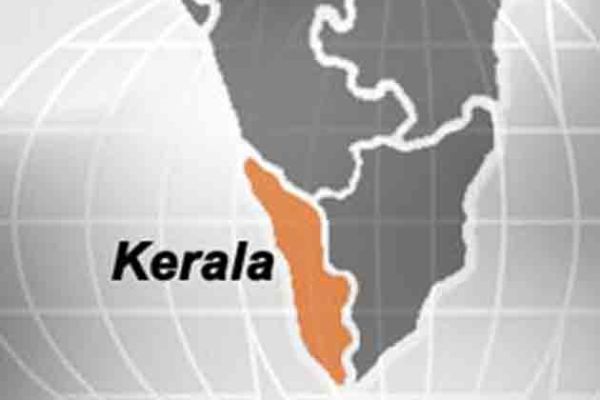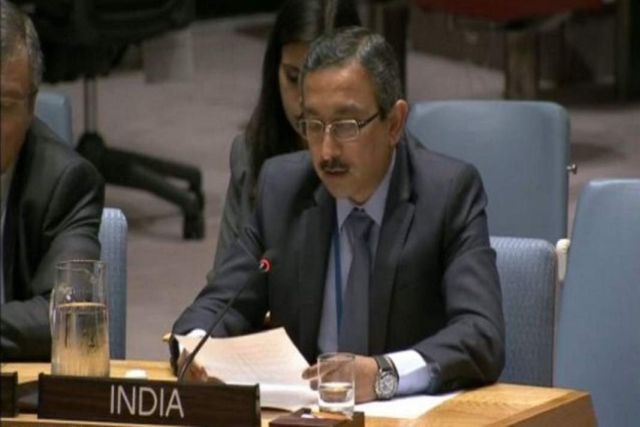
by Editor | May 25, 2021 | Business, Business Summit, Events, Large Enterprise
 The Hague : Indian Ambassador to the Netherlands Venu Rajamony and Mayor of Utrecht Jan van Zanen jointly inaugurated the ‘Incredible India and Kerala Tourism stalls at the Vakantiebeurs (Holiday Fair), the largest tourism event in the Netherlands.
The Hague : Indian Ambassador to the Netherlands Venu Rajamony and Mayor of Utrecht Jan van Zanen jointly inaugurated the ‘Incredible India and Kerala Tourism stalls at the Vakantiebeurs (Holiday Fair), the largest tourism event in the Netherlands.
The Mayor was on Tuesday the first to view India’s major tourist attractions in Virtual Reality, a novel initiative taken by the Embassy of India in collaboration with India Tourism.
As a special attraction, visitors also received opportunity to take pictures of themselves with famous Indian monuments such as Taj Mahal and Qutub Minar as well as the wildlife and natural landscapes of India.
The stalls were inaugurated with Mayor van Zanen and Ambassador Rajamony lighting traditional Indian lamps. Indian refreshments were also served to around 500 visitors throughout the day.
Vakantiebeurs is held every year in the city of Utrecht at the heart of the Netherlands and attracts a large number of visitors. There has been a steady increase in the number of tourists from the Netherlands to India with approximately 21,000 electronic visas issued in 2017.
—IANS

by Editor | May 25, 2021 | Business Summit, Events, News, Politics, Social Round-up

Gautam Bambawale
By Gaurav Sharma,
Beijing : India’s envoy to China, Gautam Bambawale, on Monday met Secretary General of the Shanghai Cooperation Organisation (SCO) Rashid Alimov and discussed the agenda and preparation of the annual summit of the grouping in China.
Prime Minister Narendra Modi is expected to attend the summit, likely to be held in June.
Bambawale, who took over as India’s envoy to China in November last year, presented his credentials to Alimov.
Both sides discussed issues of further development and strengthening of multifaceted interaction in the SCO framework in a constructive atmosphere.
There was a detailed exchange of views on the main agenda items of SCO and preparation for the upcoming events of SCO in 2018.
Bambawale assured Rashid of India’s readiness to closely cooperate on all important areas of SCO activities.
India and Pakistan entered the Chinese-led grouping last year. With their admission, the number of member countries stands at eight.
—IANS

by Editor | May 25, 2021 | Economy, News
 By Arul Louis,
By Arul Louis,
New York : India will “leapfrog” Britain and France to become the world’s fifth largest economy in 2018, ahead of an oncoming major global economic shift towards Asia, according to a British research organisation.
The World Economic League Table (WELT) 2018 released on Monday by Centre for Economics and Business Research (CEBR) said that in dollar terms India will rise from its seventh rank to overtake those European economies next year despite the stumble of demonetisation and the introduction of Goods and Services Tax (GST).
“The World Economic League Table shows that despite temporary setbacks from demonetisation and the introduction of the new GST tax, India’s economy has still catch up with that of France and the UK and in 2018 will have overtaken them both to become the world’s fifth largest economy in dollar terms,” said CEBR Deputy Chairman Douglas McWilliams.
The CEBR projections give India the fifth spot a year ahead of the International Monetary Fund estimates, which move it up in 2019.
According to the IMF, the size of India’s economy is currently $2.439 trillion. With an annual growth rate of 6.7 per cent in 2017 and 7.4 in 2018, it expects the size of India’s economy to be $2.926 trillion in 2019, when it will pull ahead of France and Britain according to its projections.
The world’s largest economies now are the US ($19.362 trillion), China ($11.937 trillion), Japan ($4.884 trillion), Germany ($3.652 trillion), France ($2.575 trillion), Britain ($2.565 trillion) and India, according to the IMF.
CEBR charts a trend of global economic shift to Asia.
“The interesting trend emerging is that by 2032, five of the 10 largest economies will be in Asia, while European economies will be falling down the ranking and the US will lose its top spot,” CEBR Senior Economist Oliver Kolodseike said.
According to WELT estimate, by 2032 three out of the world’s four largest economies will be Asian – China, India and Japan.
Korea and Indonesia are expected to join list of the world’s top 10 economies, with Taiwan, Thailand, Philippines and Pakistan making the top 25 list.
Construction activities are expected to get a tremendous boost, mainly because of India and China, according to CEBR.
“Construction’s share of world GDP is to reach its highest level ever, driven by ultra large global transformational projects,” Graham Robinson, director of Global Construction Perspectives, said.
“The Chinese Belt and Road Initiative and the Indian infrastructural project will boost construction’s share of world GDP to 15 per cent by 2032, probably the highest share of world GDP construction has seen since the pyramids or Great Wall of China were built.”
(Arul Louis can be reached at arul.l@ians.in)
—IANS

by Editor | May 25, 2021 | Corporate, Corporate Buzz, Corporate Governance, News, Politics

Ian Jacobs
By Sarwar Kashani,
New Delhi : India has an ambitious target of providing higher education to 40 million students by 2020 and to achieve the goal it should allow foreign universities to operate in the country — either through partnerships or letting them open their own campuses, says the Vice Chancellor of a top-rated Australian university.
Ian Jacobs, a surgeon-turned-academician heading the University of New South Wales (UNSW) in Sydney, is exploring how his institution can cater to the enormous demand and avail the massive opportunities in India’s education sector, one of the world’s largest.
But the environment around and the structure of India’s education system is challenging amid tight regulations even as reforms planned in the sector are exciting for international institutions and education businesses.
“The structure of higher education and regulations around it in India make that quite challenging. We are looking at how to do that and exploring innovations to do that,” Jacobs told IANS during a trip to India.
“At the moment, it is not possible for an international university to open its own campus in India. But it may be possible for us to partner with an Indian university so that we can bring to India the depth of experience that we have in quality higher education at a very large scale. That is what we are exploring. It is quite a complicated environment to do that.”
India has set an aggressive target of achieving 30 per cent gross enrolment ratio (GER) in higher education by 2020. GER is the total enrolment in higher education among the population in the age group of 18-23.
According to the Ministry of Human Resource Development, India’s GER was 24.5 per cent in 2015-16, a quantum jump over the last decade when it was a mere 10 per cent in 2004-05. But the enrolment ratio is still low compared to China’s 26 per cent and Brazil’s 36 per cent.
To achieve the 2020 target and allow more and more young men and women access to higher education, Jacobs said, his university was ready “to contribute and create opportunities for new jobs and play a role in opening up the young people’s eyes to the opportunities for their life.
“We provide higher education of quality on a large scale. And that is something India very badly needs. The ambition in India is to educate many millions of young people to degree level.”
UNSW offers courses in art and design, arts and social sciences, environment, business, engineering, law, medicine and science and has a range of scholarships for international students.
Jacobs said India also needed foreign university collaborations because the scale of operations of high-quality educational institutions in the country would not be able to deliver on the government’s target and the country’s need.
“India, of course, needs high quality (education), but it also needs scale and UNSW can contribute to expand that scale. We can provide it partly by students from India coming to UNSW.
“But the real exciting thing would be to be involved in India — providing higher education to Indians in India. We are looking to partner with existing universities. We are looking how to do that. We are at a very exploratory stage.”
UNSW’s Pro Vice Chancellor Laurie Pearcey said the Indian government’s Institutions of Eminence or the 10+10 initiative — to give 10 public and 10 private institutions unprecedented administrative and financial autonomy — has thrown up possibilities for partnering with foreign universities.
“Once these 20 universities are identified, they will operate with a high level of autonomy and international partnerships through joint degrees, through articulation agreements, through large international research collaborations… All of that would be made possible on a scale that is currently not really accessible for foreign universities in India,” Pearcey said.
He said the proposed Foreign Educational Institutions (Regulation of Entry and Operations) Bill that seeks to permit foreign players into the higher education system could make things better for the country.
The Institutions of Eminence initiative “is really exciting… that is going to give India a chance to develop autonomous institutions which can do great research and will give the great education”, he added.
He also felt tight regulations in the education sector in India come at the expense of collaborations with world-class institutions.
“Regulation is a good thing but at the end of the day the government is interested in quality and at the same time that does come at the expense of collaboration.”
Former Indian diplomat Amit Dasgupta, UNSW’s Country Head in India, said besides the 10+10 initiative India needed 400 new universities and 40,000 new colleges to achieve a 30 per cent GER by 2020.
“If you need to upgrade, if you need to have quality faculty, one has to ask what is the purpose of higher education.
“And that purpose will determine the kind of collaboration. If the purpose is only employability, that is one approach. If the purpose is innovation and research, that is another approach. But I think all of this gets combined somewhere and I think this upgrading is going to only happen through collaboration with world-class foreign universities.”
(Sarwar Kashani can be contactedl at sarwar.k@ians.in)
—IANS

by Editor | May 25, 2021 | Muslim World

Tanmaya Lal
By Arul Louis,
United Nations : In an aid programme that confounds the US policy in the region, India is partnering with Iran to send Afghanistan the assistance that President Donald Trump has said New Delhi should provide.
“Last month, the first consignment of wheat grain assistance from India reached Afghanistan through Chhabahar port in Iran,” India’s Deputy Permanent Representative Tanmaya Lal told the Council on Thursday.
“While it was regrettable that the denial of overland access to Afghanistan “hurts the welfare of the Afghan people,” he said, “a new era of enhanced, reliable and robust connectivity” through Iran has begun.
Pakistan does not allow Indian assistance to Afghanistan pass through its territory.
This Indian aid, which predates Trump’s request and is an element of India’s broader international assistance policy, puts two elements of the US President’s regional policies at odds: He wants India to provide aid to Afghanistan but he also wants to isolate Iran.
Announcing his new policy for Afghanistan in August, Trump said that he wanted India “to help us more with Afghanistan, especially in the area of economic assistance and development”.
The National Security Strategy he unveiled earlier this week called upon India to increase aid in the region, but it declared that the US “was rallying the world to confront “the danger posed by the dictatorship in Iran”.
Trump sees Iran as one of its greatest foes, accusing it of creating regional instability and sponsoring terrorism, even as he makes common cause with some countries from where support in men, money and materials flow to terrorists in Afghanistan and elsewhere.
The US is dependent on Pakistan for ferrying supplies sent by sea for it troops and its programmes in landlocked Afghanistan.
But India will not be able to provide any substantial material assistance to Afghanistan through Pakistan and will have to rely on Iran, making Tehran by default a hidden collaborator furthering an element of Trump’s policy involving New Delhi and Kabul.
The first consignment of 1.1 million tonnes of wheat India had committed to providing Afghanistan reached Zaranj through the Chhabahar port in Iran and the Indian-built Delaram-Zaranj highway from the Iran border.
India pledged a $1 billion dollar package for Afghanistan last year.
Afghanistan’s Parliament costing $90 million was built by India, symbolic of its commitment to Afghanistan’s democracy and it has been attacked by the Taliban, a terrorist force supported by elements in Pakistan’s government.
Another key project, the 215-kilometre Delaram-Zaranj highway built at a cost of over $150 million and several Indian lives taken by terrorists was used for delivering the wheat to Afghanistan.
(Arul Louis can be reached at arul.l@ians.in)
—IANS

 The Hague : Indian Ambassador to the Netherlands Venu Rajamony and Mayor of Utrecht Jan van Zanen jointly inaugurated the ‘Incredible India and Kerala Tourism stalls at the Vakantiebeurs (Holiday Fair), the largest tourism event in the Netherlands.
The Hague : Indian Ambassador to the Netherlands Venu Rajamony and Mayor of Utrecht Jan van Zanen jointly inaugurated the ‘Incredible India and Kerala Tourism stalls at the Vakantiebeurs (Holiday Fair), the largest tourism event in the Netherlands.



